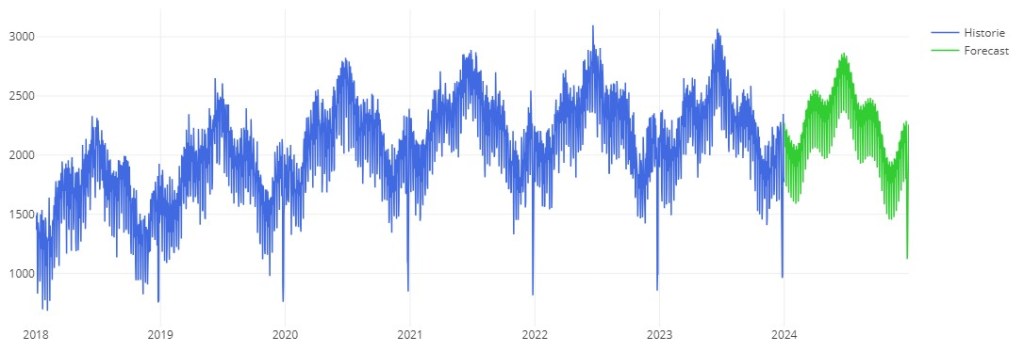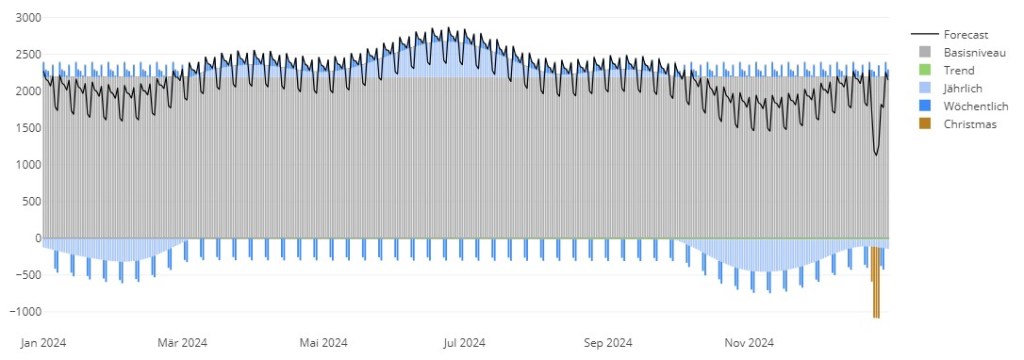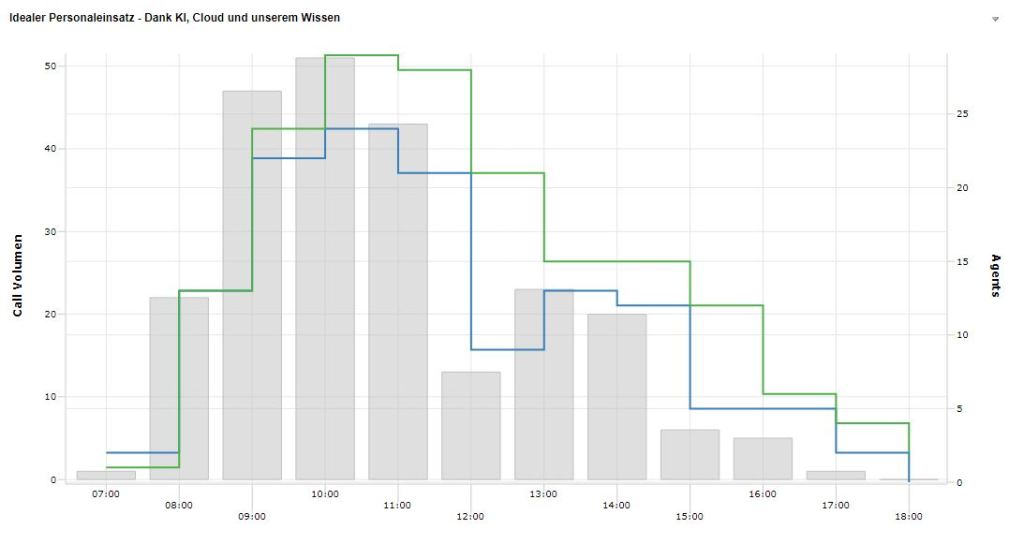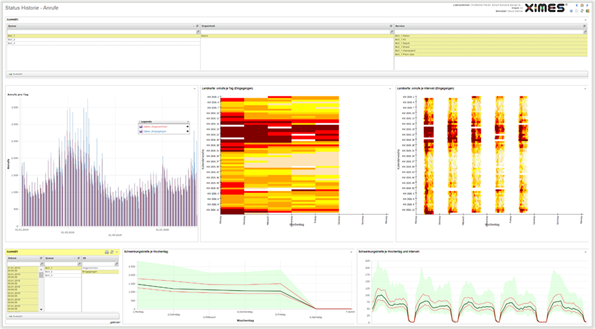Forecasting in the Call Center - Demand-driven Planning for First-class Customer Service

Precise forecasting of staffing requirements in the call centre enables efficient customer service.
By forecasting future call volumes and staffing requirements enables customised schedules.
Operational requirements and employee preferences will be considered.
Content
↓ Why is a forecast so important in the call center?
↓ How can call center personnel requirements be determined?
↓ 1. Forecast of future call volume
↓ 2. Determination of personnel requirements
Why is a Forecast so Important in the Service Center?
In many industries, workforce management is especially challenging in customer service. To provide good & consistent service quality and remain competitive, service centers must ensure that the right number of well-trained agents is available to handle the expected flow of requests. This requires effective workforce management that accurately determines the workforce demands.
However, call volumes in service centers can vary significantly, making it difficult to predict personnel demands accurately. Different times and weekdays, along with seasonal changes and promotions, all contribute to these variations. Additionally, product failures or even natural disasters can lead to increased call volumes, often challenging call centers with meeting the demand for qualified personnel or deploying existing personnel flexibly.
How can call center personnel demands be determined?
Predicting how many staff will be needed is very important for planning employees effectively. This is especially true for call centers. To know the exact demand, it’s crucial for accurate forecasts. Good data is the key and basis! Guessing or trying to figure out personnel needs manually isn’t enough. Only the right software can make precise calculations to predict how many agents will be needed in the future.
1. Forecast of future call volumes
The Forecast solution TIS from our partner XIMES does exactly that. It collects various factors from the past such as calls, customer numbers, sales, accidents, trends, as well as weeks and holidays. It analyzes them and predicts the volume of incoming calls in the future. The software can consider any number of factors to tailor the forecast to the needs of each service center. Factors that are not statistically relevant are automatically identified and excluded from the forecasts. Besides, counterarguments and alternative hypotheses can be considered as influencing factors and can be confirmed or refuted afterward.
Forecast of all-day call volumes
Using past call data, the TIS develops individual models for each day of the week. It considers not only baseline levels, trends, seasonal patterns, and calendar events but also various specific influencing factors. These could include marketing campaigns, major events, weather phenomena, or even lunar phases. All factors are automatically checked for their statistical relevance, considering only those that prove to be truly significant. The result is an accurate prediction for the expected calls on any given day.


Forecast of intraday call volumes
Using past patterns, forecasts for the number of calls are created and distributed throughout the course of each day. This involves identifying and considering typical call volume patterns across different weeks (such as holiday weeks or regular weeks) and on individual weekdays. This method helps predict how many calls can be expected in the future within each designated time interval (e.g., 30 minutes) in the call center. The generated models can then be validated by planners, checked for errors, and adjusted if necessary.
2. Determination of personnel requirements
Once future call volumes have been forecasted, the next step is to figure out exactly how many agents are needed to meet the service center’s service goals. A special simulation is created for this purpose, tailored to the specific requirements of the service center. Based on the predicted call volumes, the software calculates the optimal personnel demand in terms of the required working hours per time interval and the qualifications needed for the agents.

The data obtained is then easily passed to the workforce management, where it forms the optimum basis for effective deployment plans – deployment plans that are both effective and demand-oriented, as well as taking into account the individual wishes of the employees.
Archive
Employee Retention in Retail
We’re Here for You

